Exploding olives, tempting tapas, and a tale of virtual travel
We begin in Barcelona, where the buildings bend as if they’re listening to a vamp by blind jazzman Tete Montoliu. Gaudí’s bones still twitch beneath the mosaic skin of the city, and even the pigeons in Plaça Catalunya seem to know they’re part of some delicious sorcery. It smells like espresso, old stone and surrealism. You hop on a train toward Navarra. The air is quieter here, but heavier somehow, like it remembers Franco and the Basques and the old kings.
Then it’s Madrid that stares you down with Goya’s ghosts and tapas joints where the olives quietly explode. Culture here isn’t a backdrop: It’s a laugh, a dance, a secret chord.
The funny thing is, our butts never leave our seats at Las Flores in Bonifacio Global City. It’s a case of traveling without moving. Chalk that up to the menu—being presented by the Bistronomia Group’s Las Flores, Tomatito, Rambla, and Rumba restaurants—which takes us on a trip of sorts to places in Spain, carrying us through the country’s soul, where food stirs with art, culture dances with memory, and family ties simmer gently in a shared cazuela. A line from the martyred poet Federico García Lorca gently wafts through the breeze. Something about warm bread, a bullfighter, deep songs.
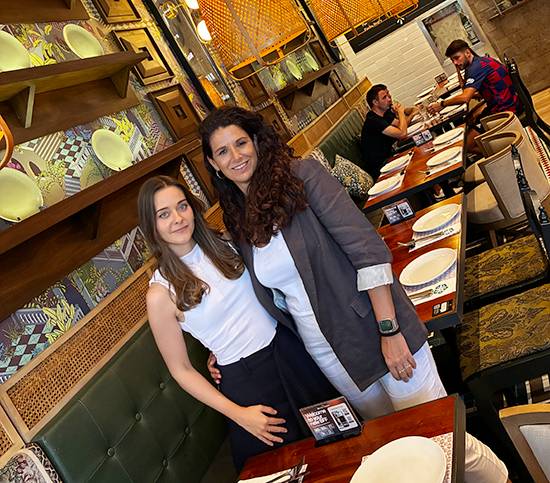
Our tour, er, culinary guides are Spanish chef Alfredo Rodriguez Sangrador and two new Bistronomia Spanish brand ambassadors: Marta Aranda Baños and Cristina Garcia-Villalba Marba. Alfredo, the Bistronomia corporate executive chef since 2018, hails from Madrid; Marta is from Navarra, which she describes as being famous for its Tomate Feo de Tudela (“which is very ugly but with an amazing flavor…”); and Cristina is from Barcelona. Marta shares, “It’s good because we can share our traditions and thoughts about the different parts of Spain.”
The role of Marta and Cristina is not just to promote the cuisine (recommending food and drinks, enhancing the restaurant experience) but to introduce diners to the rich traditions, stories, and spirit of Spain.
Chef Alfredo points out how authenticity is a key ingredient. “I think our success is because when we are doing authentic Spanish cuisine, we stay authentic. Many of the other restaurants mix Filipino and Spanish cuisines, but we don’t adjust our recipes for Filipino tastes. That’s our identity.”
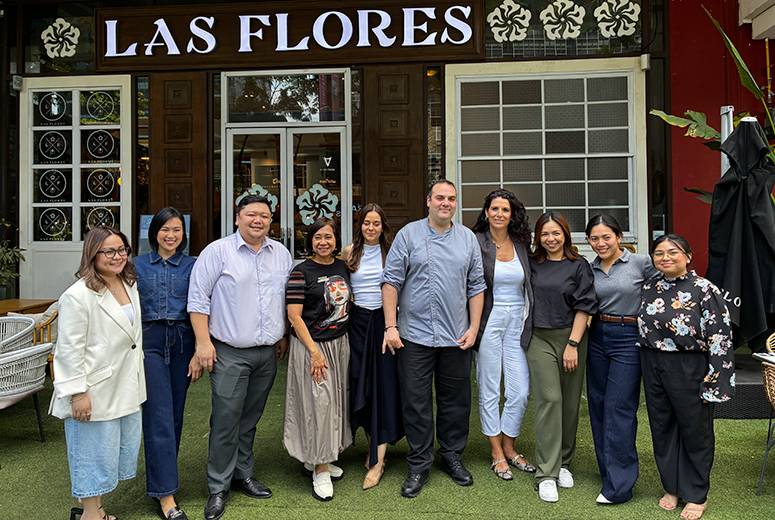
Thus, for many Spanish guests dining at Bistronomia, it’s a nostalgic experience, transporting them back to cherished memories of home.
“The food of Bistronomia (like the croquetas, the bacalao) reminds me of home,” shares Marta, a former journalist. “When I first ate them, I had to close my eyes and I was like seeing my grandmother cooking back home.”
Cristina agrees. “The ingredients we use here are of high quality and the taste is like those dishes found in Spain,” she says. “Spanish cuisine is unique because it has a touch of fashion and the traditional.”
The chef adds, “Our flavors are intense but natural.”
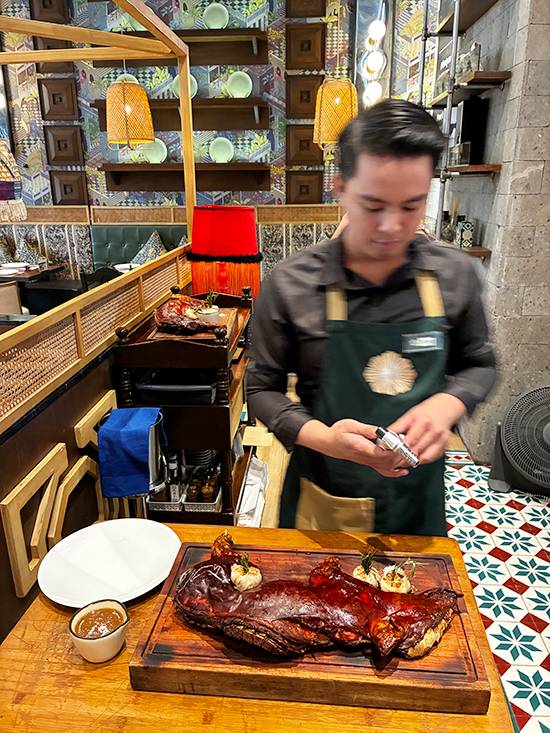
We find out firsthand over lunch how Bistronomia restaurants offer an authentic, unforgettable taste of Spain, staying true to traditional recipes while embracing a spirit of creativity and imagination.
We start with a dish of spherical olives, a modernist take on a Catalonian starter that looks like an olive but is liquid inside. Chef Alfredo explains, “We puree green Spanish olives, add secret powders, and shape them using spoons. When you bite it, it explodes with flavor.”
Then we have some Salmon y Salmon. In this dish, silky marinated salmon meets the salty pop of roe, creamy truffle, and sweet honey, contrasted with airy baguette crunch. This is a modern variant of the traditional Spanish pinchos. Cristina points out how the word “pincho” refers to the stick used in holding the topping on the bread.
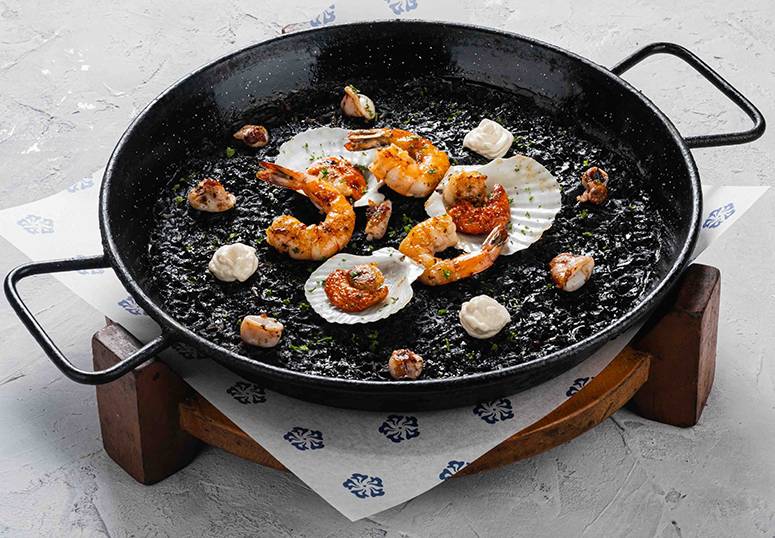
Both dishes are from Rambla, which focuses on modern, creative cuisine, especially from Catalonia. Dishes such as the spherical olives reflect avant-garde techniques while honoring traditional Spanish roots.
You can also order those olives at Rumba, which specializes in Mediterranean cuisine, a mix of Spanish, French, Italian, Greek, and Turkish palates. Chef Alfredo says, “At Rumba, our rice dish is cooked in a cast-iron casserole in the charcoal oven, giving it a smoky flavor. We call it Arroces al Carbon (charcoal rice). It is because we don’t use a paellera.” Its open kitchen provides an inviting feel and connection of sorts between the guests and the chefs.
The Ensalada Las Flores (green lettuce, cherry tomatoes, homemade potato chips) and the serving of Croquetas De Jamón Ibéricoare excellent. They reinforce how Las Flores champions traditional dishes from all across Spain, offering the best regional flavors in a contemporary, sophisticated setting.
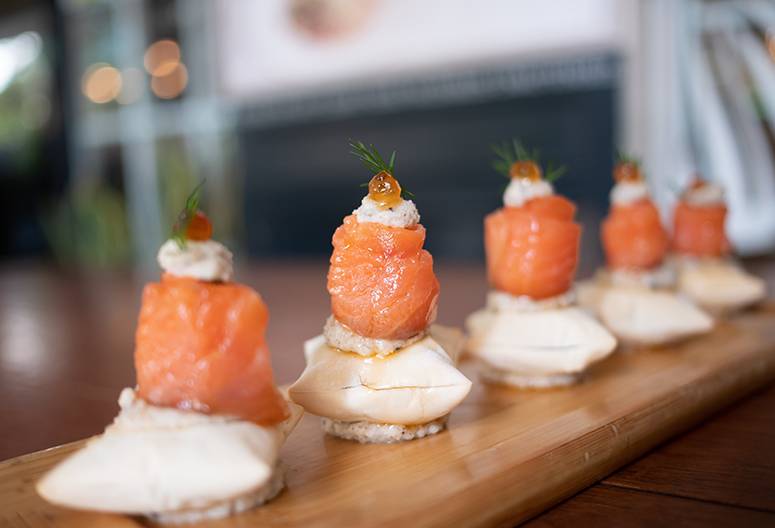
“It’s about gastronomy which is rooted in the relationship between food, culture, and tradition. That’s why at Las Flores, we have a diverse selection of dishes that demonstrate the depth of what Spain has to offer,” explains chef Alfredo.
When Cristina first visited the Philippines before the pandemic and started missing Spanish food, she asked a fellow Spaniard for a recommendation. Without hesitation, the answer came: “Las Flores.”
You can also sample Iberian Ham Croquettes (a staple in tapas bars in Spain) at Rambla and Tomatito. The latter revolves around Spanish cuisine but is “more fun, sexy, and young.” This restaurant is known for playful, modern tapas with a twist. (Its branch in Opus Mall is where you’d usually find me and photographer Avee T. sipping sangria.) Dig also the lively Spanish music and the flamenco-inspired décor.
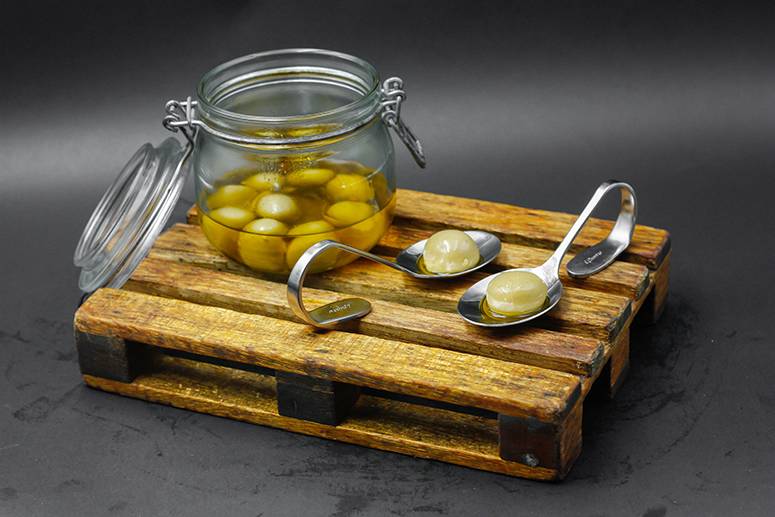
Next on the menu are Chipirones Andaluza (fried baby squid, kimchi mayo) and Paella Negra (black rice, baby squid, shrimps, scallops, aioli). But the star of our food-tasting is the cochinillo, served by all Bistronomia outlets: a Segovian-style roasted suckling pig, with its tender meat and crispy crackling skin. This is a traditional Christmas dish in many Spanish households. A disclosure: Since I have a shellfish allergy and can’t eat Paella Negra, chef Alfredo thoughtfully tells the Las Flores kitchen staff to instead serve Paella Setas (mushroom paella) for me. It’s a personal favorite of Bistronomia marketing manager Laura Angeles.
The combo rocks: If I were ever on death row, that ultimate meal of mushroom paella and cochinillo would be high on my list — along with some out-of-season fruits (“willing to wait…”).
Our Spanish culinary excursion is punctuated with some Tres Leches, a nod to Rumba’s fusion flair, which is a sponge cake soaked in three types of milk (condensed, evaporated, and cream), mixed with rum, topped with Chantilly cream, cinnamon, and mango jam. Very soft, moist, with just the right sweetness.
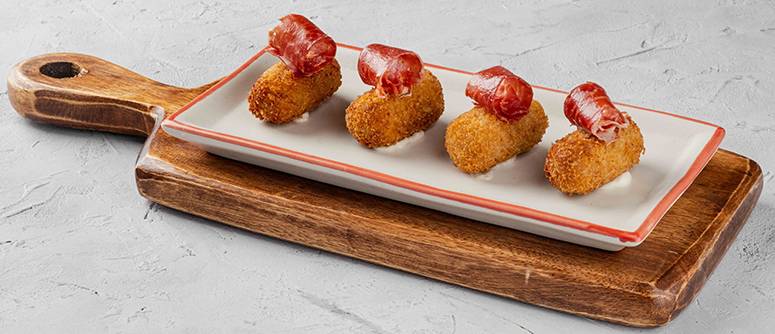
“Even if it’s simple or looks simple when you cook with love and passion, the flavors are better. That’s the heart of Spanish cuisine,” chef Alfredo concludes.
It has been a long and delicious trip. It is wonderful how Spain could be visited vicariously through food. We have crossed borders we did not even see, with (to steal a line from Lorca) our tongues scarlet and thirsting.
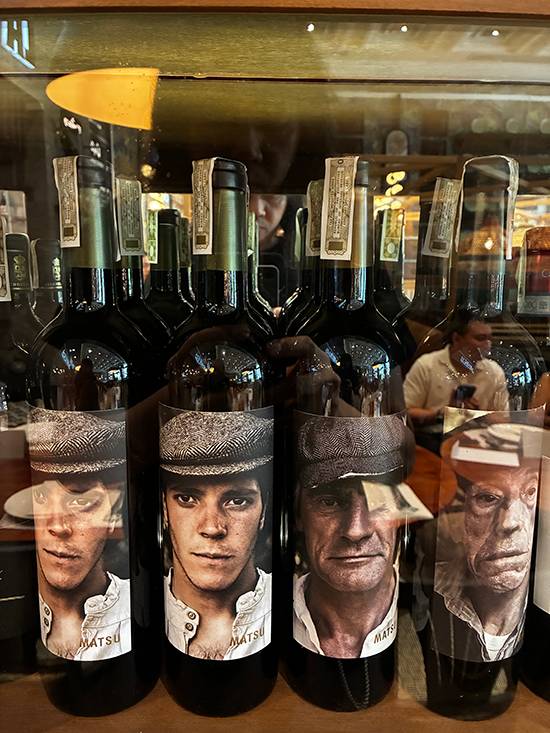
* * *
Bistronomia is a group of Spanish restaurants in Manila—Las Flores, Tomatito, Rumba, and Rambla—committed to delivering authentic Spanish gastronomy. Led by a Spanish chef and supported by Spanish brand ambassadors, Bistronomia brings Spain’s rich culinary traditions and modern creativity to life for Filipino diners. Bistronomia is part of The Bistro Group.
For information, visit www.bistro.com.ph/


